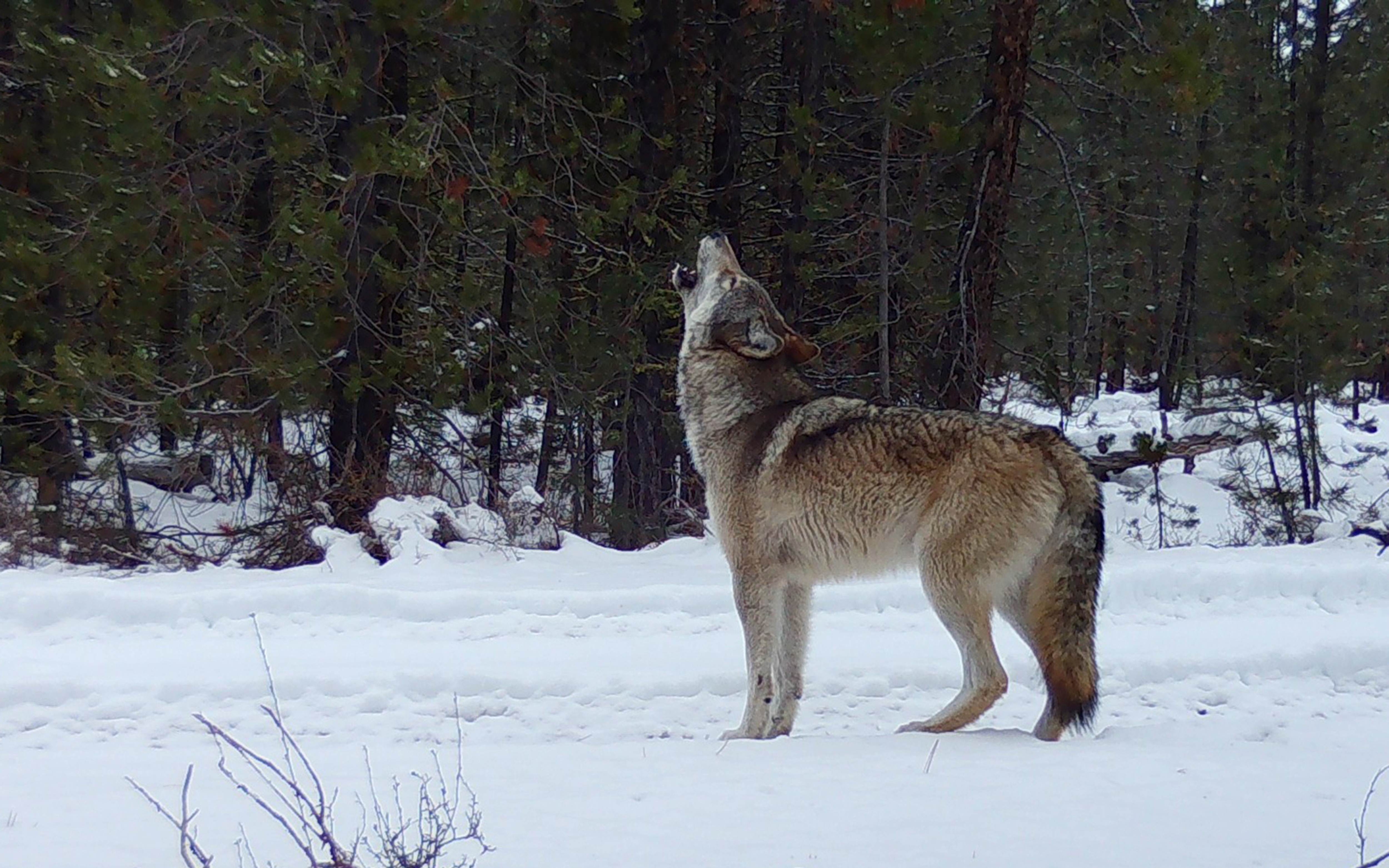FOR IMMEDIATE RELEASE
April 11, 2025
Eugene, OR — Today, the Oregon Department of Fish and Wildlife (ODFW) released in its annual report of the minimum 2024 gray wolf population and pack count for the state, which shows encouraging growth after years of stagnation. In both 2022 and 2023 the minimum wolf count was just 178. From 2019-2023, Oregon’s minimum wolf population increased by just 5. The 2024 minimum count is 204, the largest in the state’s history, and the first time the population tops 200 since wolves began naturally returning to the state in 2008.
“After several years of very concerning population trends for Oregon’s wolves, the significant growth in our minimum wolf population is very welcome news,” said Bethany Cotton, conservation director for Cascadia Wildlands. “As wolves face serious threats at the national level and Washington state’s population declined for the first time, it’s heartening to have positive news in Oregon.”
Additional positive news in the report includes seven breeding pairs documented in western Oregon and 25 total packs, an increase from 22 in 2023. Wolves in the western third of Oregon enjoy federal Endangered Species Act protections and are primarily managed by the federal Fish and Wildlife Service.
Illegal wolf killings remain a significant threat to wolves in Oregon, with at least seven wolves killed by poachers in 2024. While the news that Oregon now has seven breeding pairs in the western portion of the state is encouraging, it is tempered by the recent poaching of the Metolius pack breeding male. That death is not reflected in the 2024 report. Of the 26 documented wolf deaths in 2024, 22 were caused by humans. It is illegal to kill a wolf anywhere in the state of Oregon without authorization. Killing a wolf in the western portion of the state is both a federal and state crime.
As the report notes “[w]ith seven breeding pairs documented in the West Zone in 2024, Phases 2 or 3 [of the Oregon Wolf Plan] could be reached as early as 2027. But for a poaching incident in 2023 that reduced the number of breeding pairs that year, the West Zone would have moved to Phase 2 this year.”
“Poaching remains a primary threat to Oregon’s wolves, yet the Governor’s draft budget for the agency cuts all anti-poaching funds,” said Cotton, conservation director for Cascadia Wildlands. “We call on the legislature and the Governor to ensure those funds are restored so that our state’s progress toward wolf recovery is not further undermined by the poaching crisis.”
Additionally, predation incidents decreased in 2024, with 69 total events, down from 73 in 2023. Oregon is home to over 1.38 million cows and sheep. Wolves present a very minor impact to this population, with weather and disease responsible for orders of magnitude more deaths and injuries. The Oregon Department of Agriculture’s compensation program granted all requests for livestock confirmed or deemed probably killed or wounded by wolves at fair market value in full in 2024. The program granted a total of $789,565 in public funds across 13 counties. Of the requests made to the program, 61% were for non-lethal coexistence tools assistance. That figure decreased from 2023 when 84% of the requests were for coexistence tools.

